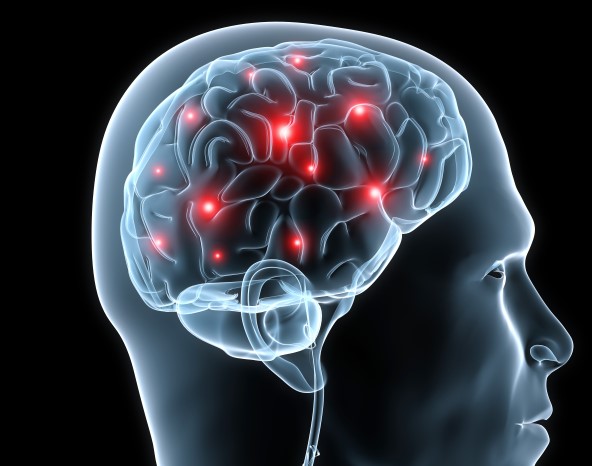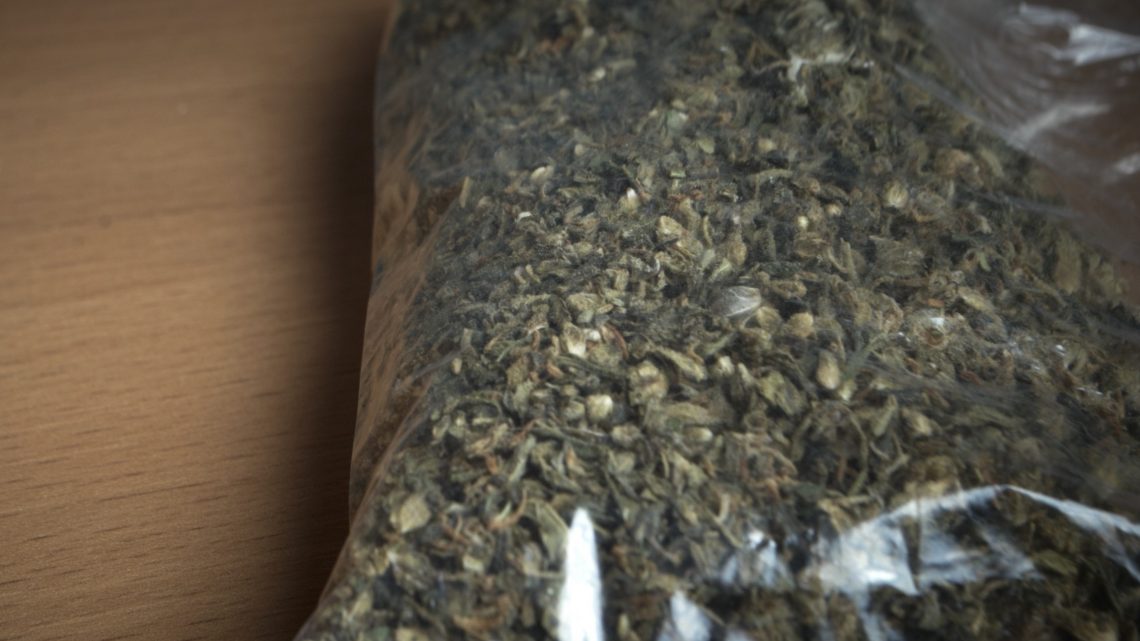What Exactly is Marijuana?
Marijuana (cannabis) is a mind-altering substance derived from the Cannabis Sativa plant. It is made from the dried flowers, leaves, and other parts of the plant and then processed and used in three main forms: Marijuana, hashish, and hash oil. Marijuana comes from the dried leaves, flowers, seeds, and stems of the plant, hashish (or hash) is the resin of the flowers from the plant, while oil can be made from any part of the plant.
Most people who use cannabis do so to experience a sense of euphoria and relaxation, most often referred to as a “high.” The main ingredient in the plant that causes someone to feel high when it is consumed is delta-9 tetrahydro-cannabinol, or THC.
Cannabidiol (CBD) is not marijuana and has no psychoactive effects; it is derived from the hemp plant, a cousin of the marijuana plant. Hemp plants are defined as any cannabis plant that has 0.3% or less THC. Even a plant with 0.4% THC would be classified as a marijuana plant, even though that tiny amount isn’t going to have a noticeable psychoactive effect. In other words, CBD is not intoxicating and won’t produce a high.
Cannabis has a psychoactive effect on the brain and causes changes in the user’s perception and mood. It affects how the person perceives the environment. That means that everyday activities such as watching television and listening to music will become altered. You may be more sensitive to sound. You feel hungrier. Colors look different. In other words, the user loses his or her sense of reality to some degree.
Is Marijuana Legal?
While 47 of the 50 states have legalized cannabis for medicinal use at least, and 11 states have legalized it for recreational use, marijuana is still not legal on the federal level because of its Schedule I status.
A Schedule I drug is a substance that (1) has a high potential for abuse; (2) has no currently accepted medical use; and (3) has a lack of accepted safety for their use under medical supervision. Other substances classified in Schedule I include heroin, LSD, mescaline, hallucinogenic amphetamine derivatives, fentanyl derivatives. While most agree it should not be categorized as a Schedule I drug, highly politicized debates continue, and due to this scheduling, studying it continues to remain a challenge due to regulatory barriers.
Despite changes in state policy regarding legalization over the years, the increase in cannabis use, and its implications for health, the federal government has not legalized cannabis and continues to enforce restrictive policies and regulations on research into the health harms or benefits of cannabis products that are available to consumers in a majority of states. This limits research and leaves the public at risk as well as patients, health care professionals, and policy makers without the evidence they need to make sound decisions regarding the use of cannabis and cannabinoids (NCBI, 2017).
How it is Used
Cannabis can be smoked in a pipe or other implement (bong, hookah), rolled up in a paper like a cigarette (joint) or cigar (blunt), or by vaporization (called vaping).
Marijuana can also be ingested. Oils from the cannabis plants are used in baking, cooking, or other forms for consumption, including capsules and gummies. Oils can even be added to beverages and are sold in coffees, teas, sodas, etc.
Most recently, THC and CBD are being used to make sprays and tinctures that can be dropped under the tongue. Topical oils are also being used as extracts to relieve muscle pain.
How Cannabis Makes a Person High
Marijuana has mind-altering compounds that affect both your brain and your body, so no matter how you consume it, it will have a psychoactive effect on you and leave you feeling high. THC, the main psychoactive ingredient in cannabis, stimulates the part of your brain that releases dopamine. Dopamine is a neurotransmitter in the brain that causes us to feel pleasure; when dopamine is released, we feel happy, euphoric, or relaxed.
Smoking or vaping marijuana sends THC into the bloodstream very quickly (within seconds or minutes). THC levels typically peak in about 30 minutes and wear off in 1 to 3 hours. Eating foods with marijuana can not only make you high but those effects can be stronger because of their concentrated form. Additionally, they will take longer to leave your system. It can take up to an hour before you feel any effect from edibles containing THC, and it can take several more hours for the effects to wear off.
The problem with eating a brownie containing THC, for example, is that you may not know how much you are using or how it will make you feel until it is too late. A single brownie might contain 4 or 5 times more THC than someone smoking would have used. In fact, more people tend to visit the emergency room after consuming edibles than smoking marijuana, simply because edibles are more likely to induce psychiatric side effects, such as severe anxiety or panic attacks.
Here’s the other problem: Cannabis can have a paradoxical (contradictory) effect on the vascular system, depending upon how much you ingest and how your body metabolizes it. Low levels may decrease anxiety, while higher levels can certainly cause a panic attack. Different strains can also impact you differently, just as the same strain can impact different people in very different ways. In other words, some people are more susceptible to the effects of THC than others.
Not Your Parents’ Weed
In the 1970s, marijuana was mainly brought in from Columbia and was a mixture of leaves, stems, flowers, and other parts of the plant. It was nowhere near the potency it is today. Now that the industry has become much more high tech, the potency of marijuana continues to increase.
This is problematic because as marijuana use is becoming more common, the perception that it is harmless is increasing. While you cannot die from overdosing on marijuana, too much of it, or use in some situations, can indeed be harmful.
One Arizona study found that teens are using high marijuana concentrates at alarming rates. These concentrates are highly potent forms of cannabis that contain triple the usual amount of THC. It is the THC in cannabis that is responsible for the psychoactive side effects. This is especially concerning as the adolescent brain is still under development. Very high doses lead to cognitive impairment, psychosis, and can lead to cannabis use disorder.
Here’s what else chronic use can lead to:
Marijuana Use Can Affect Your Mental Health
Not everyone has a pleasant experience with marijuana use. While many use cannabis in hopes it will calm them, all too often it has the opposite effect, and can leave you feeling anxious, afraid, or panicked. Chronic use also raises your chances of developing clinical depression or can worsen the symptoms of any other mental disorders you already have. In high doses, it can make you paranoid or lose touch with reality so you hear or see things that aren’t there.
It Can Lead to Distorted Thinking
Marijuana can cloud your senses and judgment. The effects it has can depend on how potent it is, how often you use it, the form it is in (smoke or edible), and much you have used it in the past. It might:
- Heighten your senses (including your perception of pain, anxiety, etc.)
- Distort your sense of time
- Affect motor skills and make driving more dangerous
- Lower your inhibitions, leading to risky sex or risk-taking behaviors
You Can Get Hooked on It
About 10% of people who use marijuana become “hooked.” In other words, they continue to use and abuse it, even though it harms their relationships, schoolwork, jobs, health, or finances. The risk of this occurring is greater for younger or heavy users. For instance, the odds of addiction are 1 in 6 if you use cannabis in your teens. It might be as high as 1 in 2 if you use it every day.
You know you are hooked on marijuana when you feel you have to have it, become irritable, restless, unable to sleep, and uninterested in other things without it.
It Can Have a Negative Effect on Your Brain

Marijuana can make it harder for you to focus, learn, and remember things. This seems to be a short-term effect that lasts for 24 hours or longer after you stop smoking. One study suggested heavy use in adolescence could even result in loss of IQ points in adulthood, though that hasn’t been proven. Early use is especially problematic if you start using cannabis at a younger age before the brain is fully developed.
Important Definitions: Addiction, Dependence, Tolerance, Misuse
The term “addiction” has been used interchangeably with dependence but the two are not the same thing. Having a high tolerance to a drug does not mean someone is addicted to it, either. Further, drug addiction and drug misuse are different things.
Drug tolerance occurs when your body is regularly exposed to a drug. This is a common side-effect of most medications. It simply means that your body has become used to the drug and you do not notice the effects or receive the same benefits as you initially did.
Drug dependence means your body has come to depend on the drug to function normally. You will most likely experience some type of withdrawal symptom if you stop taking it abruptly. For this reason, a doctor will have you wean off certain medications slowly when a medication change is needed. This is still different than addiction.
Drug misuse refers to the incorrect or excessive use of a substance. Not everyone who misuses a mind-altering substance is addicted to it. On the other hand, someone who does so and has the inability to control and stop using that substance is displaying signs of being addicted to it.
Drug addiction is the psychological and physical inability to stop consuming a drug despite the harm it is causing you or your loved ones. It is much more than a dependence on a substance or activity or misusing a drug. A person with an addiction will continue his or her harmful behavior in spite of the damage it does, or the cost involved to self or others.
That’s because addiction takes the body and brain hostage.
When people are truly addicted, they experience withdrawal symptoms when they stop taking the drug or cease the behavior. In some cases – as in alcohol and abuse of benzodiazepines – medical supervision may be required as stopping long-term use of these without help can be fatal.
Withdrawal symptoms can include:
- Anxiety
- Irritability
- Tremors and shaking
- Nausea
- Vomiting
- Fatigue
- Loss of appetite
Is Marijuana Really Addictive?
Is marijuana addictive? The answer is, it depends. While the majority of those who use cannabis will never become physiologically addicted to it, some will display “classic behaviors” of someone who is. Cannabis smokers do not typically experience either tolerance or withdrawal symptoms, but as what is available contains higher and higher levels of THC, researchers are beginning to worry that this may change.
Unlike alcohol, nicotine, and other substances, cannabis affects different neurological systems, and as a result has different long-term effects in the brain. One key difference is that alcohol and nicotine are neurotoxic (they kill brain cells) while cannabis does not appear to have this effect. We don’t yet know for sure if marijuana kills brain cells, but their cognitive effects are all more evident among young people.
Signs You or Your Loved One May Have a Problem
Cannabis Use Disorder
Cannabis use disorder (CUD) is a diagnosis give for problematic marijuana use.
Symptoms of Cannabis Use Disorder
At least two of the following symptoms within a 12-month period indicates cannabis use disorder:
- Taking more cannabis than was intended
- Difficulty controlling or cutting down cannabis use
- Spending a lot of time on cannabis use
- Craving cannabis
- Problems at work, school, and home as a result of cannabis use
- Continuing to use cannabis despite social or relationship problems
- Giving up or reducing other activities in favor of cannabis
- Taking cannabis in high-risk situations
- Continuing to use cannabis despite physical or psychological problems
- Tolerance to cannabis
- Withdrawal when discontinuing cannabis.
The severity of the person’s problems can be indicated as follows:
- Mild: two to three symptoms
- Moderate: four to five symptoms
- Severe: six or more symptoms
Part of cannabis use disorder is that it includes problems with cannabis withdrawal that, while symptoms are not at the severity level of other drugs such as heroin or cocaine, can still be quite uncomfortable. Symptoms of withdrawal depend on the extent of use.
Cannabis use disorder is very different from recreational use where use is occasional, light, and infrequent. Non-problematic or recreational marijuana use is generally understood to be the use of marijuana without any negative consequences for the user or for other people.
Characteristics of recreational marijuana use include:
- Use is very occasional and is not a regular or frequent way someone spends his or her time; more time is spent on other activities that are considered more important.
- There is no compulsion to use it. The person is easily able to decide to use or not use marijuana when it is available and freely offered.
- The person is easily able to use only a small amount of marijuana with a mild effect, with no particular desire to “get stoned.”
- The use of marijuana is purely recreational, and only happens in social situations; it is not “needed” to help the person relax, get through the day, or perform certain activities.
- Excessive amounts of money are not spent on it, and other essential purchases, such as food, household bills, clothing, and other responsibilities are not sacrificed in favor of marijuana.
- Marijuana is not used in a way that can cause short or long-term negative health effects (only relevant to edible marijuana use, as smoke inhalation, and some vaping products, is always harmful).
Are There Benefits Associated with Marijuana Use?
There are certainly some benefits associated with cannabis use, particularly when it comes to certain medical conditions. While research is still limited because of its scheduling, researchers are finding cannabis can be beneficial medicinally in some people. Like any drug, though, there will certainly be side effects with its use.
Medical marijuana is legal in some form in a majority of states while more than 10 states and Washington, DC have legalized the recreational use of cannabis. On a federal level, however, this is not the case, and the federal government’s ban on marijuana has made it difficult to study its effects on humans. Limited research shows that it could help:
- Chronic pain
- Seizures from epilepsy
- Muscle spasms such as those from multiple sclerosis
- Sleep problems for those with fibromyalgia, MS, and sleep apnea
- Anxiety
- Loss of appetite and weight loss in people with AIDS
- Nausea or throwing up from chemotherapy
- Dravet syndrome or Lennox-Gastaut syndrome
While there are undeniably some benefits when it comes to the use of marijuana for certain medical conditions, chronic recreational use of this drug, like any other drug, can certainly be problematic, especially among young people. Weigh all the pros and cons carefully before you decide and then proceed with caution until you see how this drug affects you.
Potential Negative and Long-term Effects of Marijuana Use:
- Brain health: Marijuana can cause permanent IQ loss of as much as 8 points when people start using it at a young age. These IQ points do not come back, even after quitting marijuana.
- Mental health: Studies link marijuana use to depression, anxiety, suicide planning, and psychotic episodes. It is not known, however, if marijuana use is the cause of these conditions.
- Athletic Performance: Research shows that marijuana affects timing, movement, and coordination, which can harm athletic performance.
- Driving: People who drive under the influence of marijuana can experience dangerous effects: slower reactions, lane weaving, decreased coordination, and difficulty reacting to signals and sounds on the road.
- Baby’s health and development: Marijuana use during pregnancy may cause fetal growth restriction, premature birth, stillbirth, and problems with brain development, resulting in hyperactivity and poor cognitive function. Tetrahydrocannabinol (THC) and other chemicals from marijuana can also be passed from a mother to her baby through breast milk, further impacting a child’s healthy development.
- Daily life: Using marijuana can affect performance and how well people do in life. Research shows that people who use marijuana are more likely to have relationship problems, worse educational outcomes, lower career achievement, and reduced life satisfaction.
What Are the Short-Term Effects of Cannabis?
The short-term effects of using cannabis may include:
- Feeling of calm
- Drowsiness
- Loss of inhibitions
- Loss of co-ordination
- Decreased nausea
- Talkativeness
- Anxiety and paranoia
- Increased appetite
- Dryness of the eyes, mouth, and throat
- Bloodshot eyes
What Are the Long-Term Effects of Cannabis?
There is limited research on the long-term effects of cannabis and studies are ongoing. On the available evidence, the major possible adverse effects are:
- Decreased motivation in areas such as study, work, or concentration
- Depression
- Decreased memory and learning abilities
- Increased risk of respiratory diseases associated with smoking
Understand the Potential Dangers Before You Decide to Try
Last month, the Canadian Journal of Cardiology published a case report on a 70-year-old man who had a heart attack after ingesting a cannabis lollipop.
Cannabis affects the cardiovascular system and can cause an increase in heart rate and blood pressure. Some research (CDC, 2019) has noted an increased risk of heart attack following the use of cannabis because of its effect on heart rate and blood pressure.
Monte’s work is an important step toward understanding and acknowledging that cannabis consumed in different forms can lead to different adverse health outcomes. They found that of the ED visits in one Colorado center between 2014 and 2016, smoked forms of marijuana led to more severe bouts of vomiting while edibles accounted for more psychiatric, intoxication, and cardiovascular symptoms. While the study was very limited in its size and scope, what is clear is that people need to be better informed about the potential effects and potency of cannabis.
Despite the study’s findings, Monte warns that his work should not be sensationalized or taken to extremes.
“These emergency department visits should not be overstated. Our emergency department isn’t being overwhelmed with these visits. We see approximately 300 cases per day in our emergency department and really only one of those will be what we consider a ‘cannabis-attributable’ visit. So, this is a really small percentage of the people we are seeing. Many people use cannabis safely without any adverse drug events.”
As for those individuals simply curious about cannabis, particularly edibles, use caution, and if possible, do so under a doctor’s supervision.
Resources
ADAI. (2018). Learn about marijuana: Science-based information for the public. University of Washington. https://adai.uw.edu/marijuana/factsheets/whatiscannabis.htm
American Marijuana. (2020). Medical marijuana statistics 2019; Usage, trends, and data. https://americanmarijuana.org/medical-marijuana-statistics/
AsapSCIENCE. (2012). Your brain on drugs: Marijuana. https://www.youtube.com/watch?v=oeF6rFN9org
Brouhard, R. (2020). 6 conditions that marijuana can mimic. https://www.verywellmind.com/conditions-that-marijuana-mimics-4140982
CDC. (2019). Heart attack, stroke, and diabetes risk. https://www.cdc.gov/marijuana/nas/heart.html
Columbia University. (2018). More than one in ten heavy cannabis users experience withdrawal after quitting cannabis. https://www.sciencedaily.com/releases/2018/10/181022122837.htm
Chatterjee, R. (2019). Highly potent weed has swept the market, raising concerns about health risks. https://www.npr.org/sections/health-shots/2019/05/15/723656629/highly-potent-weed-has-swept-the-market-raising-concerns-about-health-risks
DrugAbuse.com. (2020). Are you really addicted to marijuana? Is anyone? https://drugabuse.com/marijuana-addiction/
Gans, S. (2020). How is marijuana used? https://www.verywellhealth.com/how-is-marijuana-used-63522
Gans, S. (2020). Is marijuana addictive? https://www.verywellmind.com/is-marijuana-addictive-67792
Gleichmann, N. (2019). Hemp vs marijuana: Is there a difference? https://www.analyticalcannabis.com/articles/hemp-vs-marijuana-is-there-a-difference-311880
Hartney, E. (2019). Cannabis use disorder for problematic marijuana users. https://www.verywellmind.com/cannabis-use-disorder-22295
Healthline. (2019). Why more people are going to the ER after eating cannabis products. https://www.healthline.com/health-news/why-edible-marijuana-products-are-sending-more-users-to-the-er
Lautieri, A. (2019). What is the difference between hashish and marijuana? https://sunrisehouse.com/quit-abusing-marijuana/hashish/#What-is-Hashish
Leafly. (2013). Why is cannabis now so different from 1970s cannabis? https://www.leafly.com/news/cannabis-101/that-strong-stuff-why-is-cannabis-now-so-diff
Mammoser, G. (2019). Why more people are going to the ER after eating cannabis products. https://www.healthline.com/health-news/why-edible-marijuana-products-are-sending-more-users-to-the-er
Monte, A.A., Shelton, S.K., Mills, E., Saben, J., Hopkinson, A., Sonn, B., … Abbott, D. (2019). Acute illness associated with cannabis use, by route of exposure: An observational study. https://annals.org/aim/article-abstract/2729208/acute-illness-associated-cannabis-use-route-exposure-observational-study
NCBI. (2017). The health effects of cannabis and cannabinoids: The current state of evidence and recommendations for research. https://www.ncbi.nlm.nih.gov/books/NBK425757/
Powell, A. (2020). Health & medicine: What we know and don’t know about pot. The Harvard Gazette. https://news.harvard.edu/gazette/story/2020/02/professor-explores-marijuanas-safe-use-and-addiction/
Radcliffe, S. (2019). Is more potent marijuana driving a surge in cannabis use disorder? https://www.healthline.com/health-news/more-potent-marijuana-driving-cannabis-use-disorder
Science Daily. (2020). Marijuana news: Teens are using a highly potent form of marijuana. https://www.sciencedaily.com/releases/2019/08/190826092256.htm
ScienceDaily. (2020). Marijuana news. https://www.sciencedaily.com/news/mind_brain/marijuana/
Vandergriendt, C. (2019). Does weed kill brain cells? And 5 other things to know. https://www.healthline.com/health/does-weed-kill-brain-cells
WebMD. (2020). How pot affects your mind and body. https://www.webmd.com/mental-health/addiction/marijuana-use-and-its-effects#1





No Comment